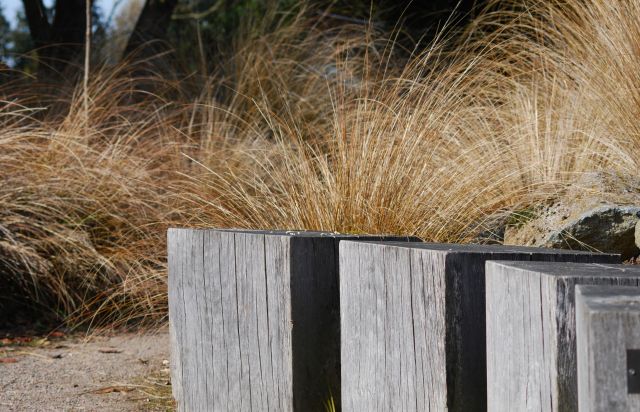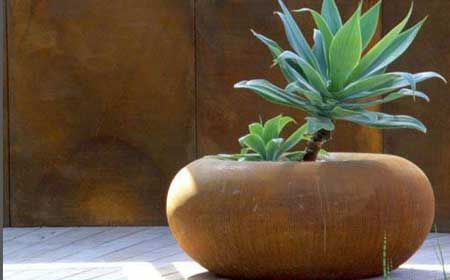Well this is the first Easter Monday I’ve ever been happy it’s rained. There’s a drought on, you know. The solution is to choose plants that laugh in the face of a hosepipe ban, so let’s look at designing a garden for these dry times.
A dry garden is a great opportunity to fix up and look sharp: sharp shadows, sleek lines and strappy leaves; this is a garden which focuses on form and texture of the individual elements of the garden.
Pared down to its stylish essentials, you can really appreciate contrasts in this garden; a smooth sawn stone alongside a shaggy spike of agave, or the feel of a tall plumed grass as you crunch down a winding gravel path.
Palms, phormium or Pinus sylvestris would be great backbone plants for this garden. Mix in a range of fuzzies and fluffies like stipas, artemesia and santolina alongside them as textural foils. And for splurges of colour throw in a few pompoms of allium, verbena bonariensis or agapanthus.
Several of these ‘secondary’ plants are airy and add visual interest by acting as softer, semi-transparent veils within the garden.
To enjoy these textures and forms keep a little space round each ingredient in the garden. An uncluttered, almost minimal approach will let each plant show itself off to its best. I thick it’s this balance of dynamic shapes with quiet spaces around them that can, interestingly, make the sharp garden also a relaxing one.
To give this space some definition, introduce some strong verticals – either plants (the towering blue spires of Echium would be fun) or man-made. Small free-standing walls would act as gallery-style backdrops to shapes and shadows, and at 400-500cm high they’d also double up as informal seating.
Larger dividing walls with large openings punched through them add a solidity and call for us to find out what lies beyond. Painting or pigmenting walls in earthy or punchy colours would add drama and depth.
This sharp style works particularly well in the smaller spaces of our sheltered town and city gardens. Our fewer, well-chosen plants mean both less maintenance time and less water. But the strong bones of this sharp garden design mean more interest all year round.
For more inspiration on dry gardening, take a look at the RHS guide here: http://tinyurl.com/rhs-dry-plants





















